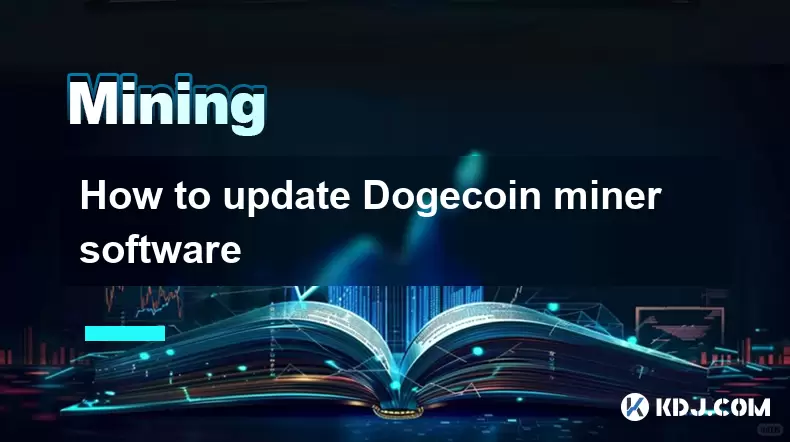-
 Bitcoin
Bitcoin $117,576.6195
-0.21% -
 Ethereum
Ethereum $2,938.5668
-1.35% -
 XRP
XRP $2.7699
4.60% -
 Tether USDt
Tether USDt $1.0003
0.01% -
 BNB
BNB $688.1624
-0.01% -
 Solana
Solana $160.5113
-1.95% -
 USDC
USDC $0.9999
0.01% -
 Dogecoin
Dogecoin $0.1976
-0.70% -
 TRON
TRON $0.3008
1.54% -
 Cardano
Cardano $0.7159
-2.16% -
 Hyperliquid
Hyperliquid $46.2240
2.04% -
 Stellar
Stellar $0.3966
22.03% -
 Sui
Sui $3.3928
-3.11% -
 Chainlink
Chainlink $15.1204
-2.43% -
 Bitcoin Cash
Bitcoin Cash $515.1741
-1.19% -
 Avalanche
Avalanche $20.8130
-0.90% -
 Hedera
Hedera $0.2001
-2.12% -
 UNUS SED LEO
UNUS SED LEO $9.0522
0.72% -
 Shiba Inu
Shiba Inu $0.0...01316
-2.01% -
 Toncoin
Toncoin $2.9843
0.61% -
 Litecoin
Litecoin $92.6745
-2.71% -
 Polkadot
Polkadot $3.9483
-0.06% -
 Monero
Monero $328.5347
1.10% -
 Dai
Dai $0.9998
0.01% -
 Ethena USDe
Ethena USDe $1.0006
-0.01% -
 Uniswap
Uniswap $8.3739
-6.50% -
 Bitget Token
Bitget Token $4.4241
-1.99% -
 Pepe
Pepe $0.0...01222
-3.96% -
 Aave
Aave $300.5203
-3.61% -
 Bittensor
Bittensor $382.2607
-1.92%
What is the lifespan of a mining GPU?
Mining GPUs typically last 2–5 years, with longevity influenced by temperature control, overclocking, power stability, and maintenance.
Jul 12, 2025 at 10:50 pm

Understanding the Lifespan of a Mining GPU
The lifespan of a mining GPU is a crucial consideration for anyone entering or already involved in cryptocurrency mining. Unlike standard usage scenarios such as gaming or graphic design, mining places continuous and heavy workloads on graphics processing units (GPUs), which can significantly impact their longevity.
Mining involves running computational tasks non-stop, often at full capacity, to solve cryptographic puzzles and validate transactions on blockchain networks. This constant operation leads to increased heat generation, power consumption, and wear on internal components. Therefore, understanding how long a GPU used for mining can last requires examining several factors including hardware quality, cooling systems, overclocking practices, and maintenance routines.
Key Point: The average lifespan of a mining GPU typically ranges between 2 to 5 years, depending on these influencing factors.
Factors That Affect the Longevity of Mining GPUs
Several elements contribute to the durability of a GPU when it's used primarily for mining. One of the most significant is temperature control. Continuous high temperatures can degrade solder joints and capacitors over time. Proper ventilation, efficient cooling systems, and ambient room temperature play a critical role in extending GPU life.
Another important factor is overclocking. While increasing clock speeds can boost hash rates, it also increases power draw and thermal output. Without adequate cooling, this practice accelerates component degradation.
Additionally, power supply stability affects GPU longevity. Unstable or poor-quality power supplies can lead to voltage fluctuations that stress the GPU’s circuitry.
- Ensure your mining rig has proper airflow.
- Use high-quality fans or liquid cooling systems.
- Avoid aggressive overclocking unless necessary.
- Monitor temperatures regularly using software like MSI Afterburner or HWMonitor.
Differences Between Mining GPUs and Gaming GPUs
Although both mining and gaming GPUs are built with similar architectures, their usage patterns differ greatly. Gaming GPUs experience intermittent loads, allowing them to cool down between sessions. In contrast, mining GPUs run continuously, often 24/7, leading to accelerated wear.
Manufacturers have even started producing GPUs specifically designed for mining, such as NVIDIA's CMP (Cryptocurrency Mining Processor) series. These models lack display outputs and are optimized for lower power consumption and better thermal management under constant load.
Gaming GPUs tend to be more versatile but may not hold up as well under mining conditions due to higher operating temperatures and voltages sustained over long periods.
Signs That Your Mining GPU Is Reaching the End of Its Life
Recognizing early signs of GPU degradation can help prevent sudden failures during mining operations. Common indicators include:
- Frequent crashes or reboots without apparent cause.
- Hash rate drops despite unchanged settings or environmental conditions.
- Visible artifacts on screen if the GPU is occasionally used for display purposes.
- Unusual noises from the card, such as buzzing or grinding sounds.
- Increased fan speeds and louder operation as the GPU struggles to maintain thermal thresholds.
Monitoring tools like GPU-Z or NiceHash can provide real-time data on performance metrics and health indicators. If any of these symptoms appear, it might be time to consider replacing the GPU or reducing its workload.
Best Practices to Extend the Lifespan of Mining GPUs
To maximize the operational life of your mining GPUs, follow these best practices:
- Use Undervolting: Reducing voltage while maintaining acceptable performance levels lowers heat output and power consumption.
- Maintain Clean Airflow: Dust accumulation can block airflow and increase temperatures. Regular cleaning of filters and fans is essential.
- Install Reliable Power Supplies: Invest in high-efficiency, stable power supplies to avoid voltage spikes or drops.
- Avoid Overcrowding Rigs: Allow sufficient space between GPUs in multi-GPU setups to improve cooling efficiency.
- Regularly Update Drivers and Firmware: Manufacturers often release updates that optimize performance and fix bugs affecting stability.
By implementing these strategies, miners can significantly prolong the usability of their GPUs and reduce the frequency of replacements.
Common Questions About Mining GPU Lifespan
Q1: Can a mining GPU last longer than 5 years?
While rare, some users report mining GPUs lasting beyond five years under optimal conditions. These cases usually involve excellent cooling, conservative settings, and minimal overclocking.
Q2: Do all GPUs degrade at the same rate when mining?
No, different brands and models handle mining stress differently. High-end cards with robust build quality and effective cooling solutions tend to outlast budget models.
Q3: Is it worth repairing an old mining GPU?
Repairing older GPUs may not be cost-effective compared to purchasing newer models with better efficiency and performance. However, minor fixes like replacing fans or thermal paste can sometimes extend life affordably.
Q4: How does mining affect warranty terms?
Many manufacturers void warranties if they detect the GPU was used for mining. Always check warranty policies before deploying GPUs in mining rigs.
Disclaimer:info@kdj.com
The information provided is not trading advice. kdj.com does not assume any responsibility for any investments made based on the information provided in this article. Cryptocurrencies are highly volatile and it is highly recommended that you invest with caution after thorough research!
If you believe that the content used on this website infringes your copyright, please contact us immediately (info@kdj.com) and we will delete it promptly.
- Bitcoin Price's Golden Number: Analyst Predicts Massive Breakout!
- 2025-07-13 02:30:12
- XRP Price Breakout: Analysts Eyeing Explosive Moves
- 2025-07-13 02:50:12
- Grayscale, AI Crypto, and Top Assets: What's the Deal?
- 2025-07-13 02:55:11
- DOGE's $0.25 Ceiling: Will the Meme Coin Break Through?
- 2025-07-13 02:30:12
- Binance, Bloomberg, and a Lawsuit Threat: CZ's Fighting Back!
- 2025-07-13 01:30:12
- Litecoin, BONK, BlockDAG Presale: Navigating the Crypto Frenzy
- 2025-07-13 00:30:12
Related knowledge

How to keep a mining rig cool
Jul 12,2025 at 01:42pm
Understanding the Importance of Cooling in Mining RigsCryptocurrency mining is an intensive process that places heavy demand on hardware components, p...

How much does it cost to start crypto mining?
Jul 13,2025 at 12:22am
Understanding the Basic Costs of Crypto MiningStarting crypto mining involves several upfront and ongoing expenses. The primary costs include hardware...

What do I need to start mining crypto?
Jul 13,2025 at 12:28am
Understanding the Basics of Crypto MiningCrypto mining is the process by which transactions are verified and added to a blockchain, and new coins are ...

How to find the best Dogecoin mining pool for me
Jul 12,2025 at 04:14pm
Understanding the Role of a Mining PoolWhen mining Dogecoin, joining a mining pool can significantly increase your chances of earning consistent rewar...

How often do Dogecoin mining pools payout
Jul 13,2025 at 04:08am
Understanding Dogecoin Mining PoolsDogecoin mining pools are collaborative groups of miners who combine their computational power to increase the chan...

How to update Dogecoin miner software
Jul 12,2025 at 12:36pm
Understanding Dogecoin Mining and the Need for Software UpdatesDogecoin mining involves using specialized software to validate transactions on the Dog...

How to keep a mining rig cool
Jul 12,2025 at 01:42pm
Understanding the Importance of Cooling in Mining RigsCryptocurrency mining is an intensive process that places heavy demand on hardware components, p...

How much does it cost to start crypto mining?
Jul 13,2025 at 12:22am
Understanding the Basic Costs of Crypto MiningStarting crypto mining involves several upfront and ongoing expenses. The primary costs include hardware...

What do I need to start mining crypto?
Jul 13,2025 at 12:28am
Understanding the Basics of Crypto MiningCrypto mining is the process by which transactions are verified and added to a blockchain, and new coins are ...

How to find the best Dogecoin mining pool for me
Jul 12,2025 at 04:14pm
Understanding the Role of a Mining PoolWhen mining Dogecoin, joining a mining pool can significantly increase your chances of earning consistent rewar...

How often do Dogecoin mining pools payout
Jul 13,2025 at 04:08am
Understanding Dogecoin Mining PoolsDogecoin mining pools are collaborative groups of miners who combine their computational power to increase the chan...

How to update Dogecoin miner software
Jul 12,2025 at 12:36pm
Understanding Dogecoin Mining and the Need for Software UpdatesDogecoin mining involves using specialized software to validate transactions on the Dog...
See all articles

























































































